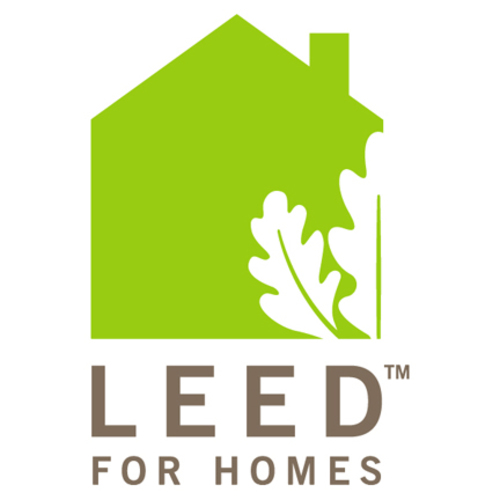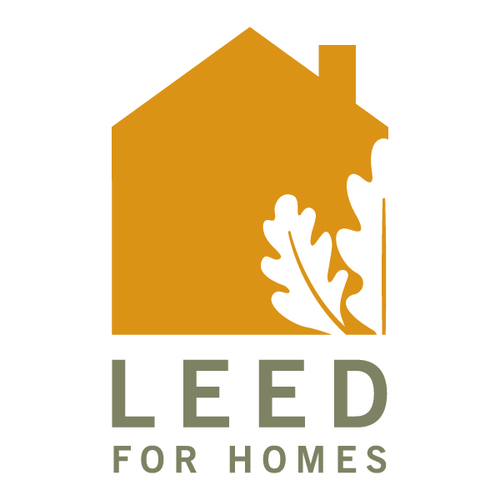
Image Credit: USGBC
My perspective on the latest version of the LEED for Homes standard (version 4) has an inescapably historic slant. This doesn’t mean that I categorically reject change. In fact, much as a parent reserves the right to be her child’s most ardent fan and harshest critic at times, I have not been at all hesitant to point out flaws in LEED for Homes over the years since the launch of the pilot.
Having established that, let me say that I applaud a number of significant improvements in the New! Improved! LEED for Homes (version 4). There are other changes about which I am considerably less enthusiastic. Green Building Advisor has been kind enough to let me share both my praise and my discontent.
In Part 1, I’ve offered some overall structural comments and reviewed the two categories that have seen the greatest improvements: WE and EQ. In Part 2, I will cover the remaining categories.
Structural changes I LIKE
First, there’s some good news with regard to the rating system structure: midrise projects have been integrated into the rating system, no longer being shunted into a separate document. It’s about time! (If we could get the California version integrated, too, I would be even happier.)
It’s also great to see that credits that include multiple performance levels are no longer parsed (absurdly) into numbered sub-credits. The levels have also been evened out more rationally into proportional steps … at least in most multi-level credits.
Structural changes I DON’T like
The LEED for Homes Committee was very happy with several innovations we pioneered – things we felt were distinct improvements over the more senior members of the LEED family, for reasons of clarity. One of these was having prerequisites and optional measures reside within the same credit, so it was easy to understand the baseline requirements and then the enhanced measures that could be taken to step up performance above the baseline in a given area. Sadly, that wisdom has been steamrollered under the behemoth that is non-residential LEED. The prerequisites and credits are now decoupled, irrationally, with separate names and numbers – purely for the sake of conformity, alas.
The threshold adjustment mechanism to account for home size impacts – though not very aptly called, originally, the “Home Size Adjustment” (no, the homes’ sizes were not being adjusted) – has been transformed into a prerequisite, EAp4, Home Size. I haven’t had time to play with the numbers to see how this affects scoring, if at all. But I do lament the move, if for only this reason: the mechanism was developed to account for not only lower or higher energy use associated with smaller-than-average or larger-than-average homes, but also for differences in material resource consumption. This idea will now be lost – whether or not it’s accounted for in the numbers.
The newly remodeled prerequisite is also now tied to the Energy Star for Homes, version 3, reference home – which was undoubtedly fashioned to some degree after the original LEED for Homes mechanism. Perhaps it’s an improvement, perhaps not. I haven’t yet had the opportunity to plumb its depths.
Another reversion to the non-residential LEED norm is the move of low-emitting building materials from their original home (MR2.2) to the Indoor Environmental Quality category. The logic of their former placement was to enable a specifier to understand all the different material properties that were of interest when selecting materials. Ah, consistency – the hobgoblin of small minds!
Now on to more petty complaints: does anyone really think that having a bunch of “cases” and “options” and “paths” (which appear now in numerous credits) lends to clarity? Not me! I also find that while some credit language has been nicely trimmed and clarified, some has been muddied and rendered overly complex and layered.
I also fail to understand why the Innovation and Design Process category has been split into two categories, Integrative Process (comprising one lonely credit) and Innovation (which has but a single prerequisite and two credits). Was ID really so overcrowded?
On the other hand, the Awareness and Education (AE) category has disappeared, and its contents subsumed into Energy and Atmosphere. Since there were only two AE credits – that really should have been one all along – I don’t object to the category going away, but the vestigial credit, now EAp3, really isn’t only about energy.
And then we have the Regional Priority category, comprising the single Regional Priority credit. I would have really preferred to see some consolidation – perhaps into a nice, tidy, “Other” category. But that’s just me, apparently.
Now on to some categories – not necessarily in order, but rather in order of most improved to most … well, you fill in the blank.
Water efficiency (WE)
The new WEc1 provides a performance pathway alternative to the prescriptive credits WEc2 (indoor water use) and WEc3 (outdoor water use), which mirror and consolidate the old WE3, SS2.3, and SS2.4. This is very sensible and uses the EPA WaterSense Water Budget Tool to calculate percentage reductions from a baseline.
WEc2 now includes clothes washers and reduces the allowable flow rates for lavatory faucets and showerheads. There is now only one award level for toilets. Any fixtures with a flow rating higher than 2.5 gpm now trigger mandatory use of WEc1.
WEc3 may or may not be an improvement – it seems straightforward, but the proof will be in the pudding. It combines limits to turf grass with minimums for native/adapted planting area. Projects with pools or other outdoor water features are required to use WEc1.
Indoor environmental quality (EQ)
The ventilation credits (former EQ4 and EQ5) have been consolidated into a single prerequisite (EQp1) and a single credit (EQc1), each addressing both exhaust and supply (or balanced) ventilation. This is handy, since they reference the same (updated) ASHRAE standards.
Some measures that used to be optional are now – appropriately – mandatory. Shared surfaces between living spaces and garages must now be air-sealed (was EQ10.2, now EQp3). Environmental tobacco smoke controls (formerly EQ11 in Midrise, now EQp6) are now mandatory and slightly simplified. Compartmentalization (formerly EQ12.1 in Midrise, now EQp7) now applies to both multifamily and attached single-family dwellings.
A number of measures have also been made more stringent, including enhanced ventilation (was EQ5.2 and EQ4.2, now EQc1), midrise compartmentalization (was EQ12.2, now EQc4), enhanced combustion venting (was EQ2.2, now EQc5), and enhanced garage pollutant protection (was EQ10.3 and EQ10.4, now EQc6).
One credit that seems a bit wacky is EQc2 (was EQ8), Contaminant Control – particularly the walk-off mats for multifamily projects. I’ll be truly shocked if any project puts in 10-foot walk-off mats to earn ½ point.
And, as mentioned above, I’m not fond of the inclusion of low-emitting products in this category (EQc7), although I do understand the logic. I have no quarrel with other aspects of this new credit, though.
The EQ category, because it is one of the largest, particularly suffers from segregating prerequisites from their companion credits. Were it not for this flaw, this category would definitely warrant “Most Improved.”
For Part 2 of this series, click here.
Ann Edminster
is the owner of Design AVEnues
, a green building consulting firm in the San Francisco Bay Area. She is also a member of GreenBuildingAdvisor.com’s team of advisors
and is the former chair and co-chair of the LEED for Homes Committee.
Weekly Newsletter
Get building science and energy efficiency advice, plus special offers, in your inbox.















0 Comments
Log in or create an account to post a comment.
Sign up Log in